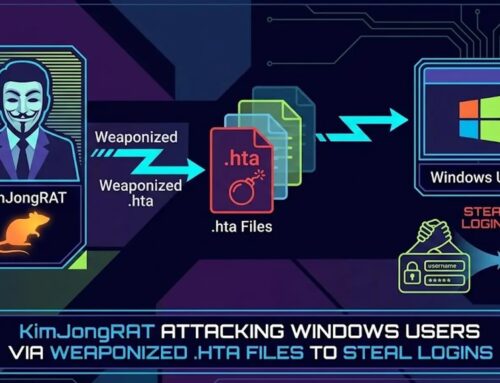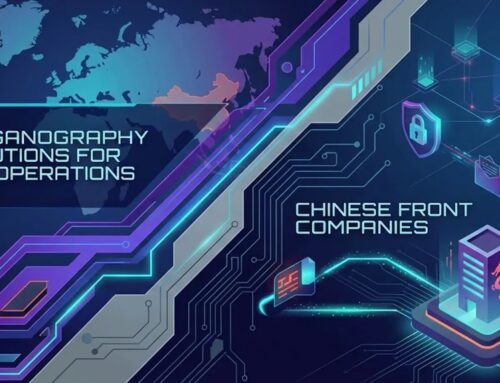
New Quishing Attack With Weaponized QR Code Targeting Microsoft Users
The digital landscape is a perpetual battleground, and even the most seemingly innocuous tools can be twisted into potent weapons. A new and alarming quishing campaign, specifically targeting Microsoft users, has emerged, leveraging weaponized QR codes embedded within malicious emails. This sophisticated threat exploits the inherent trust in QR-based authentication and device pairing, tricking unsuspecting individuals into scanning codes that deploy dangerous infostealer binaries. This isn’t just another phishing attempt; it’s a calculated evolution designed to bypass standard security measures and compromise sensitive data.
Understanding the Quishing Threat
Quishing, a portmanteau of “QR code” and “phishing,” represents an increasingly prevalent attack vector. Unlike traditional phishing, which relies on clickable links, quishing redirects users through a QR code scan. In this particular campaign, first observed in early October 2025 by Gen Threat Labs analysts, the attackers employ anomalous QR attachments that skillfully spoof legitimate Microsoft workflows. The primary objective is to lure users into a false sense of security, compelling them to scan the seemingly benign QR code. Once scanned, the code orchestrates the delivery of infostealer binaries, which are designed to surreptitiously collect and exfiltrate credentials, financial information, and other sensitive data from the victim’s system.
How the Weaponized QR Code Attacks Unfold
The attack vector begins with a meticulously crafted email. These emails are often designed to appear as legitimate notifications from Microsoft, perhaps related to account verification, password resets, or even two-factor authentication prompts. The crucial element distinguishing this campaign is the inclusion of a QR code within the email, often presented as a convenient way to “verify your account” or “pair your device.”
- Email Lure: Attackers send emails impersonating Microsoft, often leveraging urgent language to create a sense of immediacy.
- QR Code Deception: A QR code is prominently displayed, appearing to be a legitimate method for authentication or device linking within Microsoft’s ecosystem.
- Exploiting Trust: Users, accustomed to using QR codes for legitimate purposes (e.g., WhatsApp Web, banking apps), are more likely to scan without critical scrutiny.
- Infostealer Deployment: Upon scanning, the QR code redirects the user to a malicious site or initiates the download of an infostealer binary. This malware then silently infiltrates the victim’s device, harvesting valuable data.
The Impact of Infostealers
Infostealers are a particularly insidious class of malware because their primary function is stealthy data exfiltration. Once an infostealer gains a foothold, it can compromise a wide array of personal and professional information, including:
- Login credentials for various online services (email, banking, social media)
- Financial data (credit card numbers, bank account details)
- Personal identifiable information (PII)
- Company secrets and intellectual property
- Cryptocurrency wallet seeds
The consequences of such a breach can be severe, ranging from financial loss and identity theft to significant reputational damage for individuals and organizations.
Remediation Actions and Prevention Strategies
Protecting against quishing campaigns requires a multi-layered approach, combining user education with robust technical controls. For Microsoft users, especially those in corporate environments, proactive measures are paramount.
- User Awareness Training: Regularly educate employees about the dangers of quishing. Emphasize that legitimate organizations rarely ask users to scan QR codes from emails for critical actions like account verification.
- Verify Before You Scan: Always scrutinize the sender of any email containing a QR code. If in doubt, navigate directly to the official Microsoft website or service instead of scanning the code.
- Hover and Inspect (where applicable): While QR codes themselves don’t offer hover previews, be wary of any accompanying links or calls to action.
- Strong Endpoint Protection: Ensure all devices are equipped with up-to-date antivirus and endpoint detection and response (EDR) solutions capable of detecting and blocking infostealer malware.
- Multi-Factor Authentication (MFA): Implement MFA across all Microsoft services. Even if credentials are stolen, MFA acts as a critical barrier to unauthorized access, such as for CVE-2022-30190 (https://cve.mitre.org/cgi-bin/cvename.cgi?name=CVE-2022-30190).
- Email Security Gateways: Deploy advanced email security solutions that can identify and quarantine malicious emails containing suspicious QR codes or attachments.
- Network Monitoring: Implement network monitoring to detect unusual outbound connections or data exfiltration attempts indicative of infostealer activity.
- Regular Software Updates: Keep all operating systems, applications, and web browsers patched to prevent exploitation of known vulnerabilities, for instance, CVE-2023-36884 (https://cve.mitre.org/cgi-bin/cvename.cgi?name=CVE-2023-36884).
Recommended Tools for Detection and Mitigation
| Tool Name | Purpose | Link |
|---|---|---|
| Microsoft Defender for Endpoint | Advanced EDR, next-gen antivirus, network protection | https://www.microsoft.com/en-us/security/business/endpoint-security/microsoft-defender-endpoint |
| Proofpoint Email Protection | Email threat protection, anti-phishing, URL defense | https://www.proofpoint.com/us/products/email-protection |
| KnowBe4 Security Awareness Training | Simulated phishing attacks, security education platform | https://www.knowbe4.com/security-awareness-training |
| Cisco Talos Threat Intelligence | Real-time threat intelligence, vulnerability research | https://talosintelligence.com/ |
Conclusion
The emergence of this quishing campaign targeting Microsoft users underscores the sophisticated and adaptive nature of modern cyber threats. By weaponizing seemingly innocuous QR codes, attackers are finding new pathways to exploit user trust and bypass traditional security defenses. Remaining vigilant, implementing rigorous security hygiene, and continuously educating users are indispensable strategies in the ongoing effort to defend against these evolving digital dangers. Organizations and individuals must understand that the threat landscape is dynamic; today’s familiar conveniences can be tomorrow’s vulnerabilities.





